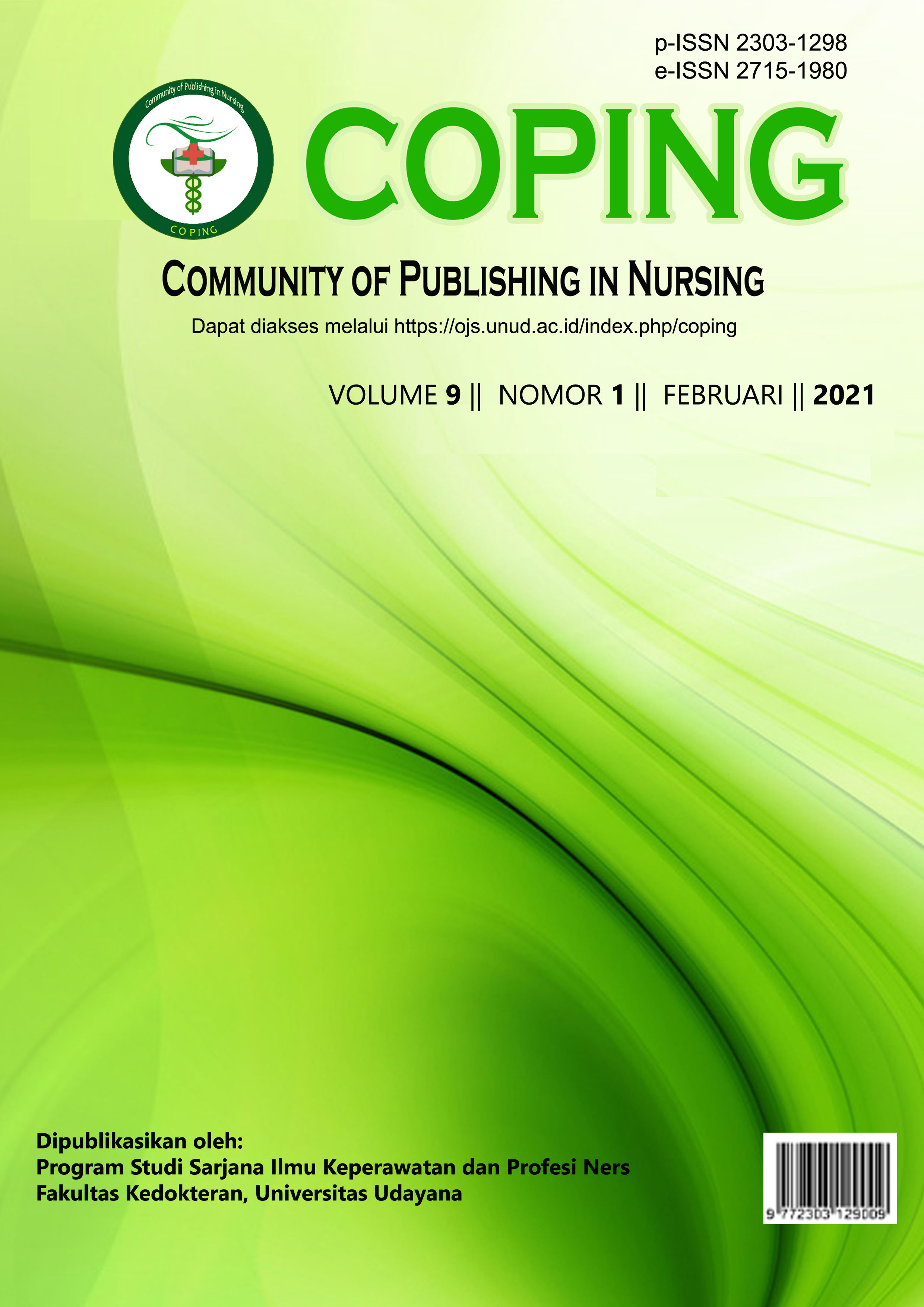PERBANDINGAN KELENGKAPAN PENGISIAN REKAM MEDIS KONVENSIONAL DAN PROTOTIPE INTEGRATED ELECTRONIC SURGICAL REPORT (IESR)
Abstract
The utilisation of Electronic Medical Record (EMR) is an implementation of information and communication technological development in healthcare. EMR improve quality and documentation of medical record. Integrated Electronic Surgical Report (IESR) prototype is an EMR development that concerned on surgical report fulfillment, allows the surgeon fullfill an android based medical record efficiently. This research is mixed method study, using qualitative study to get feedback from the IESR user, and a cross sectional analytic study to know the comparison of medical records filling completeness between Integrated Electronic Surgical Report (IESR) and conventional medical records at Sultan Imanuddin hospital. Secondary data of 31 medical record sample from medical record department in october until december 2020 was obtained. Bivariate analysis result using Mann_Whitney test showed p=0.061. There are few positive aspect including: simplicity , short duration and efficiency in medical record fulfilment using IESR. But there is no significant difference between IESR prototype utilisation and conventional medical record in term completeness fulfilment of surgical ward patients medical record.
Downloads
References
Bazzano, A. N., Martin, J., Hicks, E., Faughnan, M., & Murphy, L. (2017). Human-centred design in global health: A scoping review of applications and contexts. PloS One, 12(11), e0186744. Retrieved from https://journals.plos.org/plosone/article/file?id=10.1371/journal.pone.0186744&type=printable
Brown, T., & Wyatt, J. (2010). Design thinking for social innovation. Development Outreach, 12(1), 29–43.
Kemenkes RI. (2008a). Permankes No. 129/Menkes/SK/II/2008, tentang Standar Pelayanan Minimal Rumah Sakit. Retrieved from http://manajemenrumahsakit.net/wp-content/uploads/2012/08/PMK-No-129-tahun-2008-tengan-SPM-RS-lengkap.pdf
Kemenkes RI. (2008b). Permenkes RI. No 269/Menkes/Per/III/2008 tentang Rekam Medis. (p. 7). p. 7. Retrieved from http://pelayanan.jakarta.go.id/download/regulasi/peraturan-menteri-kesehatan-nomor-269-tentang-rekam-medis.pdf
Kemenkes RI. (2019). Profil Kesehatan Indonesia 2018 (R. Y. B. H. Kurniawan, Ed.). Retrieved from https://pusdatin.kemkes.go.id/folder/view/01/structure-publikasi-data-pusat-data-dan-informasi.html
Muratovski, G. (2017). Towards Evidence-Based Research and Cross-Disciplinary Design Practice. In Creativity, Design Thinking and Interdisciplinarity (pp. 3–15). Retrieved from https://link.springer.com/chapter/10.1007/978-981-10-7524-7_1
Stengel, D., Bauwens, K., Walter, M., Köpfer, T., & Ekkernkamp, A. (2004). Comparison of handheld computer-assisted and conventional paper chart documentation of medical records: a randomized, controlled trial. JBJS, 86(3), 553–560.
Udiyana NDM, & Darmawan ES. (2020). Implementasi Model Design Thinking dalam Perancangan Prototipe Integrated Electronic Surgical Report (IESR) di RSUD Sultan Imanuddin pangkalan Bun. Universitas Indonesia, Depok.
Ventura, M. L., Battan, A. M., Zorloni, C., Abbiati, L., Colombo, M., Farina, S., & Tagliabue, P. (2011). The electronic medical record: pros and cons. The Journal of Maternal-Fetal & Neonatal Medicine, 24(sup1), 163–166.
Wu, R. C., & Straus, S. E. (2006). Evidence for handheld electronic medical records in improving care: a systematic review. BMC Medical Informatics and Decision Making, 6(1), 1–5.







